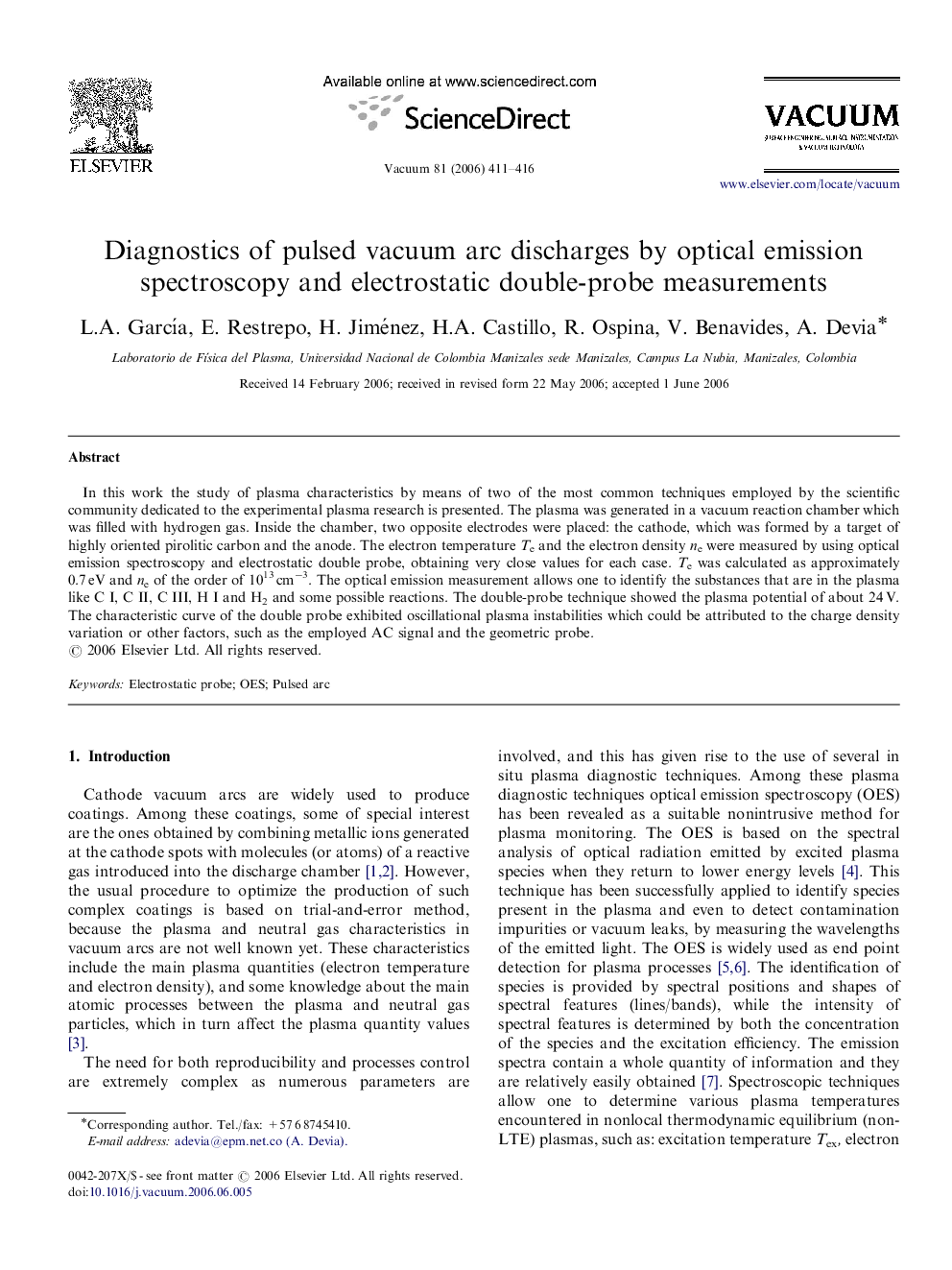| Article ID | Journal | Published Year | Pages | File Type |
|---|---|---|---|---|
| 1690670 | Vacuum | 2006 | 6 Pages |
Abstract
In this work the study of plasma characteristics by means of two of the most common techniques employed by the scientific community dedicated to the experimental plasma research is presented. The plasma was generated in a vacuum reaction chamber which was filled with hydrogen gas. Inside the chamber, two opposite electrodes were placed: the cathode, which was formed by a target of highly oriented pirolitic carbon and the anode. The electron temperature Te and the electron density ne were measured by using optical emission spectroscopy and electrostatic double probe, obtaining very close values for each case. Te was calculated as approximately 0.7Â eV and ne of the order of 1013Â cmâ3. The optical emission measurement allows one to identify the substances that are in the plasma like C I, C II, C III, H I and H2 and some possible reactions. The double-probe technique showed the plasma potential of about 24Â V. The characteristic curve of the double probe exhibited oscillational plasma instabilities which could be attributed to the charge density variation or other factors, such as the employed AC signal and the geometric probe.
Keywords
Related Topics
Physical Sciences and Engineering
Materials Science
Surfaces, Coatings and Films
Authors
L.A. GarcÃa, E. Restrepo, H. Jiménez, H.A. Castillo, R. Ospina, V. Benavides, A. Devia,
